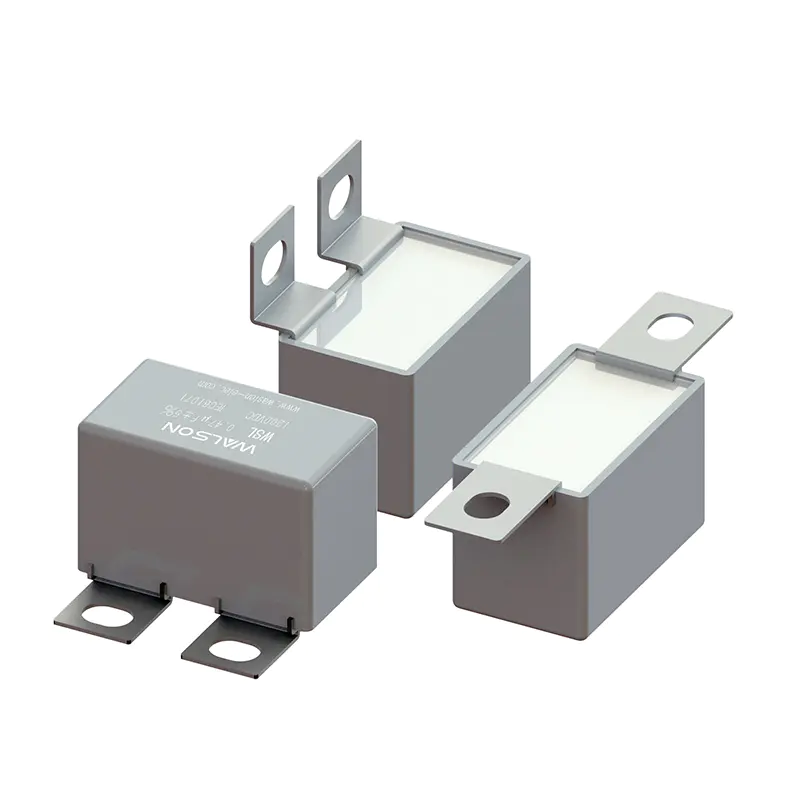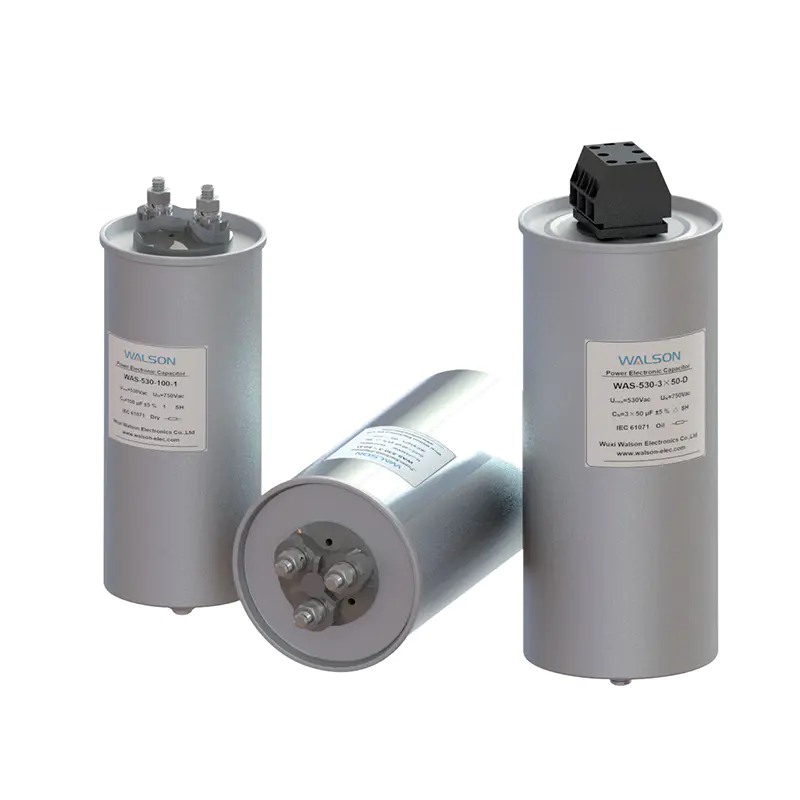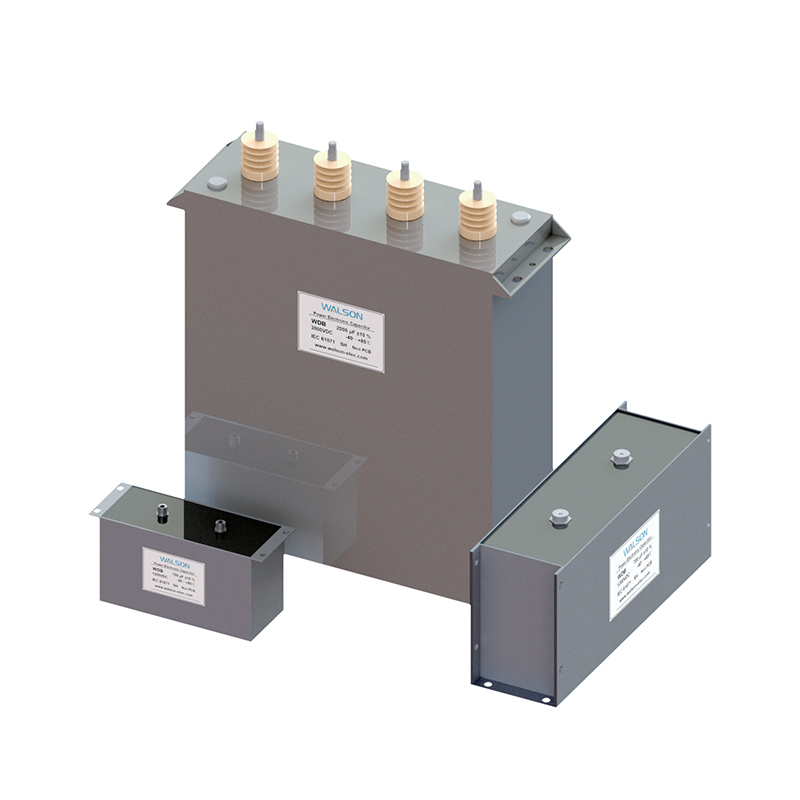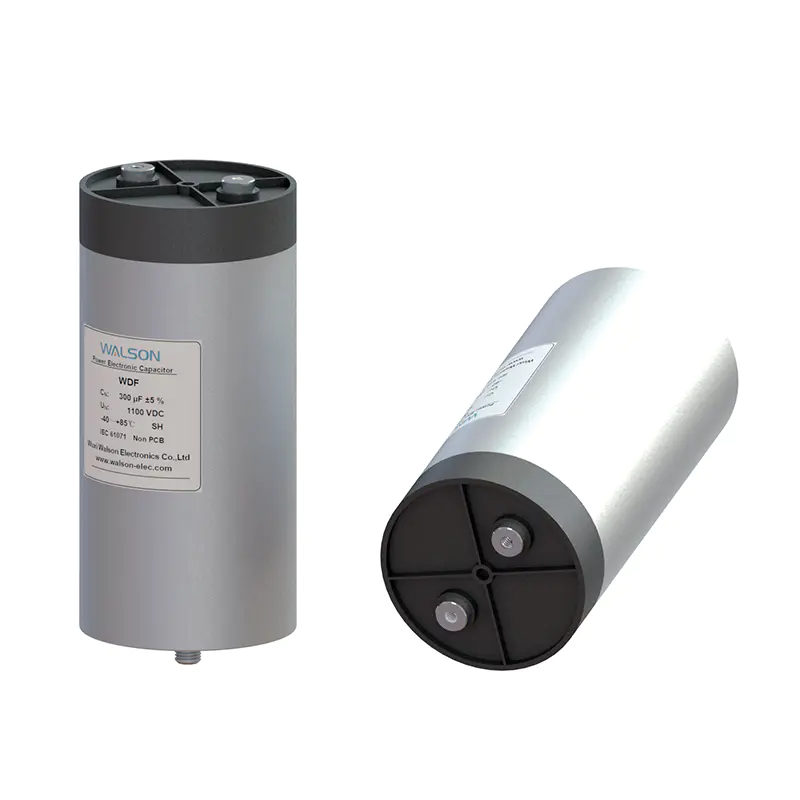- Home
- Products
- Applications
- Capacitors for Household Appliances
- Capacitors for Power Supply
- Capacitors for LED Lighting
- Capacitors for Mobile And DSL Appliances
- Capacitors for Automotive& Vehicles
- Capacitors for Photovoltaic Inverters
- Capacitors for Wind Power Plants
- Capacitors for Renewable Energy Systems
- Capacitors for Induction Heating
- Capacitors for Medical Equipments
- Capacitors for Industrial Control
- Capacitors for Power Electric
- Capacitors for Rail Transit
- Capacitors for Smart Grid
- Capacitors for University & Research Instituite (High Energy Physics)
- About Us
- News
- Contact Us
-
- Capacitors for Household Appliances
- Capacitors for Power Supply
- Capacitors for LED Lighting
- Capacitors for Mobile And DSL Appliances
- Capacitors for Automotive& Vehicles
- Capacitors for Photovoltaic Inverters
- Capacitors for Wind Power Plants
- Capacitors for Renewable Energy Systems
- Capacitors for Induction Heating
- Capacitors for Medical Equipments
- Capacitors for Industrial Control
- Capacitors for Power Electric
- Capacitors for Rail Transit
- Capacitors for Smart Grid
- Capacitors for University & Research Instituite (High Energy Physics)
Web Menu
- Home
- Products
- Applications
- Capacitors for Household Appliances
- Capacitors for Power Supply
- Capacitors for LED Lighting
- Capacitors for Mobile And DSL Appliances
- Capacitors for Automotive& Vehicles
- Capacitors for Photovoltaic Inverters
- Capacitors for Wind Power Plants
- Capacitors for Renewable Energy Systems
- Capacitors for Induction Heating
- Capacitors for Medical Equipments
- Capacitors for Industrial Control
- Capacitors for Power Electric
- Capacitors for Rail Transit
- Capacitors for Smart Grid
- Capacitors for University & Research Instituite (High Energy Physics)
- About Us
- News
- Contact Us
Product Search
Exit Menu
Why does the DC-Link Capacitor for PCB use a specific package and lead-out method?
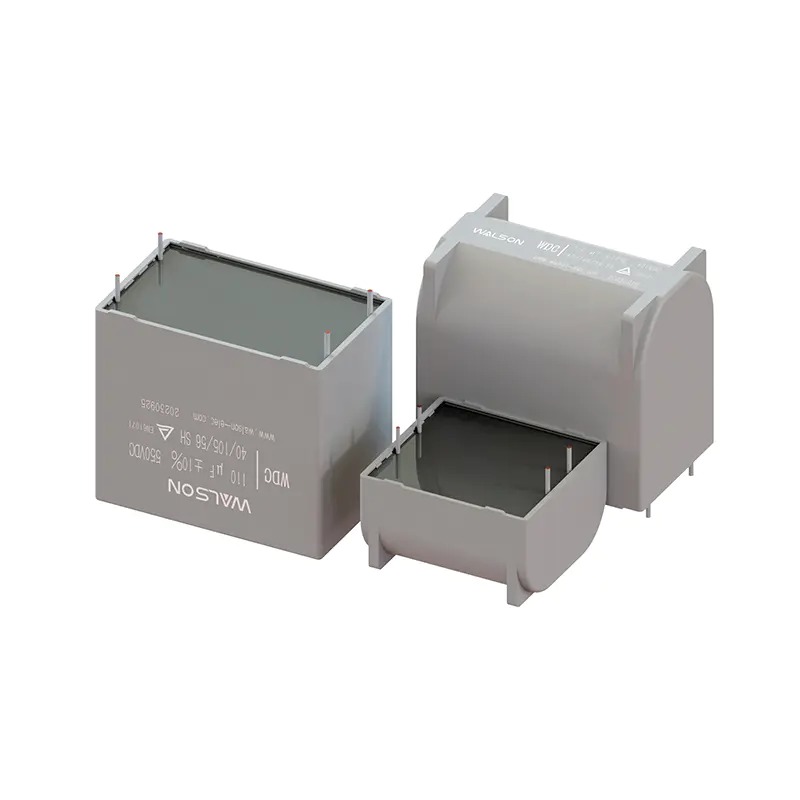
Why does the DC-Link Capacitor for PCB use a specific package and lead-out method?
The DC-Link Capacitor for PCB is mainly used in DC circuits and undertakes the key task of storing and releasing electrical energy. In power electronic systems, the DC output of the power supply is not an ideal smooth DC, but has a certain degree of ripple. These ripples are like undercurrents in the circuit, which may interfere with sensitive electronic components and even affect the performance and stability of the entire system. The primary responsibility of the DC link capacitor is to act as a "voltage regulator". Through its own charging and discharging process, it effectively smoothes these ripples, makes the output DC voltage more stable, and provides a pure and reliable power supply environment for downstream circuits.
Not only that, when facing instantaneous changes in load, such as motor starting, electronic equipment switching working mode instantly, etc., the current demand in the circuit will change dramatically. At this time, the DC link capacitor can respond quickly, release or absorb electrical energy, play a buffering role, avoid large voltage fluctuations, protect other components in the circuit from damage caused by current shock, and ensure that the system can operate smoothly under various working conditions. Its importance is like the heart of the human body, which continuously delivers stable "energy blood" to the entire circuit system and maintains the normal operation of electronic equipment.
Flame-retardant plastic shell: a safe and solid fortress
During the operation of electronic equipment, especially in some application scenarios with high power and high heat generation, the potential fire risk cannot be ignored. Once a fire occurs, it will not only cause damage to the equipment, but also cause serious safety accidents, resulting in casualties and property losses. Therefore, for key components such as DC link capacitors, the flame retardant performance of their shell materials is crucial.
The UL94 standard, as a globally recognized test standard for the combustion performance of plastic materials, provides an authoritative basis for evaluating the flame retardant ability of materials. Among them, the UL94 V-0 level represents extremely high flame retardant performance. Plastic materials that reach this level can respond quickly when facing flames, effectively prevent the spread of flames, and greatly reduce the possibility and degree of harm of fire.
The use of flame-retardant plastic shells that meet the UL94 V-0 standard is like putting on a solid "fireproof armor" for DC link capacitors. When the ambient temperature rises abnormally or even encounters open flames, this shell can delay the development of the fire with its own flame retardant properties, buying precious time for personnel evacuation and fire fighting. At the same time, it can also prevent the combustible materials inside the capacitor from contacting with external fire sources, cutting off the chain of fire occurrence from the source, and ensuring that the entire electronic equipment operates in a safe environment.
In addition, the flame-retardant plastic shell also has good mechanical and insulation properties. It can provide reliable physical protection for the delicate structure inside the capacitor, resist external mechanical stress such as collision and vibration, and prevent internal components from being damaged. At the same time, as an electrical insulation barrier, it effectively prevents current leakage, ensures the electrical safety of the equipment, and enables the DC link capacitor to work stably in a complex electrical environment.
Epoxy resin sealing: a seamless barrier with efficient protection
In the use environment of many electronic devices, there are often various unfavorable factors, such as humid air, corrosive gases, dust particles, etc. These factors are like "invisible killers" of electronic components, which may gradually erode the internal structure of the capacitor, resulting in performance degradation and even causing faults such as short circuits. In order to meet these challenges, epoxy resin sealing technology came into being and became a solid line of defense to protect DC link capacitors.
Epoxy resin is a thermosetting resin that can form a high-strength, high-stability solid material by chemically reacting with a specific curing agent. It has shown many outstanding advantages in the sealing application of DC link capacitors.
Epoxy resin has excellent waterproof performance. The special groups in its molecular structure can form tight chemical bonds with water molecules, effectively blocking the penetration of moisture. In a humid environment, whether it is an industrial workshop with high humidity or outdoor electronic equipment that may be attacked by rain, DC link capacitors sealed with epoxy resin can be safe and sound, and the internal components will not short-circuit or corrode due to moisture, ensuring the reliable operation of the equipment under harsh humidity conditions.
It also has good sealing. During the curing process, epoxy resin can perfectly fill the tiny gaps and voids inside the capacitor housing to form a seamless sealing layer. This not only prevents the intrusion of moisture, but also effectively blocks the entry of other pollutants such as dust and corrosive gases. Even in dusty factory environments or places where there is a risk of chemical corrosion, the inside of the capacitor can always remain clean and dry, avoiding performance degradation caused by the accumulation of pollutants.
Epoxy resin has strong tolerance to various chemical substances such as acids, alkalis and salts. In some electronic equipment in the chemical, electroplating and other industries, various corrosive chemicals may exist in the surrounding environment. The epoxy resin sealing layer of the DC link capacitor can resist the erosion of these chemicals like a solid shield, preventing the metal parts and internal circuits of the capacitor from being corroded, thereby extending the service life of the capacitor and ensuring the long-term stable operation of the equipment in a complex chemical environment.
Its strong bonding force is also a major advantage. Epoxy resin can be tightly bonded to the outer shell material of the capacitor and the surface of the internal components to form a strong connection. This reliable bonding not only enhances the stability of the seal, but also improves the mechanical strength of the entire capacitor structure, enabling it to better cope with mechanical stresses such as vibration and impact, ensuring that the internal components of the capacitor will not be displaced or damaged in various harsh mechanical environments, and maintaining the normal working state of the equipment.
Tinned copper terminal lead-out: guarantee of excellent electrical connection
DC link capacitors need to establish reliable electrical connections with other components in the circuit to achieve smooth transmission and distribution of electrical energy. As the electrical lead-out terminal of the capacitor, the tinned copper terminal plays a key role in this process. Its unique performance characteristics provide a solid guarantee for efficient and stable electrical connections.
Copper, as an excellent conductive material, has extremely low resistivity. This means that when the current passes through the copper terminal, it can be smoothly transmitted with very little resistance, thereby greatly reducing the loss of electric energy during the transmission process. Compared with some other materials with poor conductivity, the use of copper terminals can significantly improve the energy utilization efficiency of the circuit and reduce unnecessary energy waste. In some application scenarios with extremely high requirements for energy efficiency, such as the electric drive system of new energy vehicles and the high-efficiency power modules of data centers, this advantage of copper terminals is particularly important and can provide strong support for the energy-saving operation of equipment.
In order to further improve the performance and reliability of copper terminals, a thin layer of tin is usually plated on their surface. The tinning process brings multiple benefits. Tin has good oxidation resistance and can form a dense oxide protective film on the surface of the copper terminal, effectively preventing copper from chemically reacting with oxygen in the air, thereby avoiding copper oxidation and rusting. This not only extends the service life of the terminal, but also ensures the long-term stability of the electrical connection. Because once the surface of the copper terminal is oxidized, its resistance will increase, resulting in a decrease in the efficiency of power transmission, and may even cause problems such as poor contact, and the tin plating layer can well prevent these situations from happening.
The tin plating layer can also improve the solderability of the terminal. When the DC link capacitor is installed on the PCB board, it is usually necessary to achieve electrical connection by welding. The tinned copper terminal can better blend with the solder to form a firm and reliable solder joint. This makes the welding process easier to operate, the welding quality is more stable, and the risk of electrical failure caused by poor welding is reduced. In the large-scale production of electronic equipment, good solderability can improve production efficiency, reduce production costs, and ensure the consistency of product quality.
Tin-plated copper terminals also have good mechanical strength and corrosion resistance. During the use of electronic equipment, the terminals may be subjected to various mechanical stresses, such as plugging and unplugging, vibration, etc. The tin-plated copper terminal can withstand these external forces with its own mechanical strength without being easily deformed or damaged, ensuring the reliability of the electrical connection. At the same time, in some environments with corrosive gases or liquids, the tinned layer can provide additional protection for the copper terminals, resist corrosion, ensure that the terminals can still work normally in harsh environments, and maintain a stable electrical connection between the capacitor and the circuit.
Comprehensive advantages: synergy creates excellent performance
The DC link capacitor adopts a combination design of flame-retardant plastic shell, epoxy resin sealing and tinned copper terminal lead-out. It is not a simple stacking of components, but the various parts work together and complement each other, laying a solid foundation for the excellent performance and reliable operation of the capacitor.
The flame-retardant plastic shell provides key safety protection, effectively reduces the risk of fire, and creates good conditions for the safe operation of the entire electronic equipment. At the same time, as the external protection structure of the capacitor, it provides a stable physical environment for the internal components to resist external mechanical shock and environmental interference. Epoxy resin sealing further strengthens the protection of internal components. Through efficient waterproof, dustproof and anti-corrosion performance, it ensures that the inside of the capacitor is always in an ideal working state and is not affected by external harsh environmental factors. Tinned copper terminal lead-out focuses on achieving excellent electrical connection, with low resistance and high stability, ensuring efficient and reliable transmission of electric energy between the capacitor and the circuit.
When these three are organically combined, the synergistic effect produced enables DC link capacitors to perform well in various complex application scenarios. In the field of industrial automation, facing the harsh environment of high temperature, high humidity, dust and strong electromagnetic interference, the flame-retardant shell and epoxy resin seal of the capacitor can effectively resist environmental erosion, and the tinned copper terminals ensure stable electrical connection in complex electrical environments, providing reliable power support for the stable operation of automation equipment. In the battery management system and motor drive system of new energy vehicles, the performance and reliability of capacitors are extremely high. This combination design can meet the needs of stable storage and rapid release of electric energy under conditions such as high-speed driving and frequent start-stop, while ensuring electrical safety and environmental adaptability during vehicle operation.
From a design perspective, this combination design fully considers the various challenges that electronic equipment may face in different application scenarios, and comprehensively optimizes key factors such as safety, protection and electrical performance. It not only improves the performance and reliability of the DC link capacitor itself, but also enhances the stability, durability and safety of electronic equipment as a whole. With the continuous development of electronic technology, the performance requirements for electronic components are becoming increasingly stringent. This carefully designed and verified combination solution undoubtedly provides a strong guarantee for the DC link capacitors for PCBs to continue to play a key role in future complex applications, and becomes an important force in promoting the development of electronic equipment towards higher performance and more reliable direction.

 简体中文
简体中文 English
English Español
Español